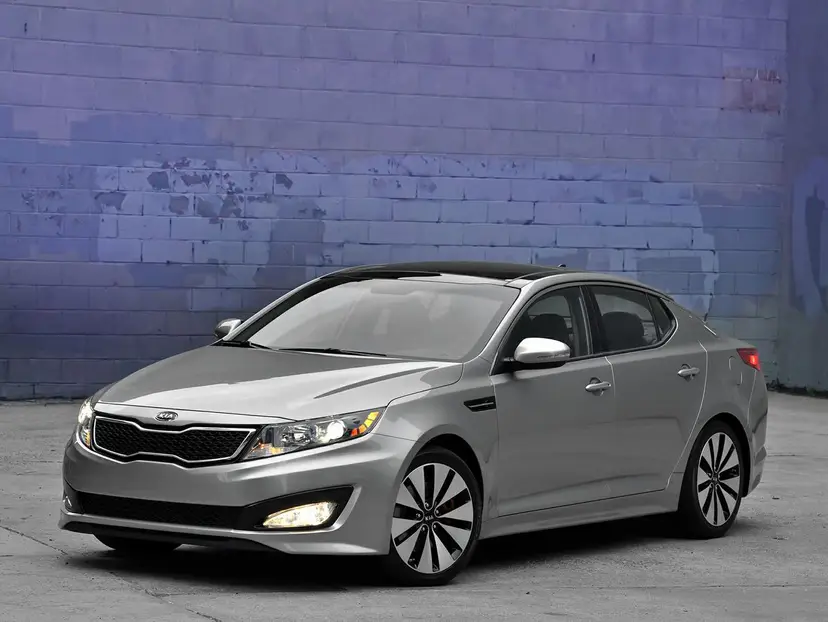
The Gilded Era of the Motor Car, in which exclusiveness and extravagance often trumped common sense, is ending. It is a demise hastened by technological, environmental and economic change, the latter stemming from growing pressure on automakers to design and develop affordable vehicles just to stay in business.
It is why historically exotic nameplates such as Lamborghini, Ferrari, Rolls-Royce and Porsche are now sponsored by generally profitable mass-market car companies. For example, Italy’s Lamborghini can afford to design, develop and market a $387,000 Aventador Coupe for a privileged few in the United States and elsewhere only because Lamborghini’s parent, Volkswagen/Audi, sells hundreds of thousands of affordable automobiles worldwide.
The story is familiar: The contributions of many support the luxurious pursuits of a few.
It is a pity — for those still clinging to the baubles and presumed prestige of what they deem to be “luxurious” — that South Korean automobile-manufacturing partners Hyundai and Kia either don’t understand or don’t appreciate the concept.
By using advanced technology to make once-uncommon amenities and components both common and inexpensive, and by enthusiastically responding to global demands for cleaner, more fuel-efficient automobiles, the South Koreans have destroyed traditional notions of automotive luxury and have rendered meaningless the pursuit of motorized “prestige” — at least, for most of us.
Consider this week’s subject vehicle, the 2012 Kia Optima SX T-GDI sedan. It comfortably seats five. The Lamborghini coupe seats two. Bring a couple of overnight bags, if that, in the Lamborghini. Bring luggage for you and four passengers in the Optima.
If you are laughing and shouting “apples and oranges,” you are missing the point. Similar comparisons can be made with the Optima SX T-GDI and almost any other super-luxury automobile.
Do you like the rich, supple leather in the $450,000 extended-wheelbase version of the Rolls-Royce Phantom sedan? The perforated leather with mesh trim in the Optima SX T-GDI is not nearly as rich or fancy. But the combination is engineered for a long, pleasant ride, and it cleans easily in the event of messy spills. The Optima’s front seats can be heated in the winter and cooled in the summer, just as efficiently and reliably as heated and cooled seats in more expensive luxury sedans.
What about navigation and a rearview backup camera? Both are available in the SX T-GDI, as options, but for a fraction of the cost of equipment included in more expensive automobiles, and with arguably better quality. For example, the backup camera in the Optima has better definition and is more enjoyable to use than the cameras in almost any sedan — luxury or mainstream — I’ve driven.
Of course, the midsize SX T-GDI won’t beat something like the Aventador Coupe off the starting line. The all-wheel-drive Lamborghini comes with a 6.5-liter, 48-valve V-12 engine (509 foot-pounds of torque, 700 horsepower). By comparison, the front-wheel-drive SX T-GDI is a wimp — a 2-liter, 16-valve in-line four-cylinder engine (269 foot-pounds of torque, 274 horsepower).
But, driving on regulated roads and staying reasonably within posted speed limits — the Lamborghini driver is not likely to get that far ahead of a Kia or anything else, especially not in the traffic of the District of Columbia and surrounding areas, where speeding, in any kind of car, is likely to draw the attention of the authorities.
Conventional wisdom says that someone who can afford the asking price of a Lamborghini isn’t worried about the pump price of gasoline. But not even Lamborghini officials believe that. I spoke with several of them during a recent visit to the Lamborghini factory in Bologna. To paraphrase, the Lamborghini bosses said their clients are rich, not stupid. Those clients, too, are concerned about gas prices and consumption and are pressuring Lamborghini to “improve fuel efficiency without harming Lamborghini’s DNA,” said Stephan Winkelmann, Lamborghini president and chief executive. And what is that DNA? “Power, speed, superior handling — all the things that Lamborghini has been known for,” he said.
Kia executives, meanwhile, have never had to carry that burden of “prestige,” one getting heavier in a world increasingly concerned about fossil-fuel costs and sourcing, land use to accommodate population growth, and making ends meet.
Kia’s DNA has always been to surprise, to give customers far more car than they expected to get at a price far lower than they expected to pay. As demonstrated by the Optima SX T-GDI, loaded with practically every amenity and technology available in more expensive sedans, it is doing that.
In the process, Kia and Hyundai are forcing their competitors to do the same. So it comes down to is a matter of perspective. Are Kia and Hyundai taking the “special” out of formerly special automobiles, turning them into commodities? Or have they democratized “special” and “luxury,” making those things affordable for — and, even more important, expected by — car shoppers everywhere?





















































